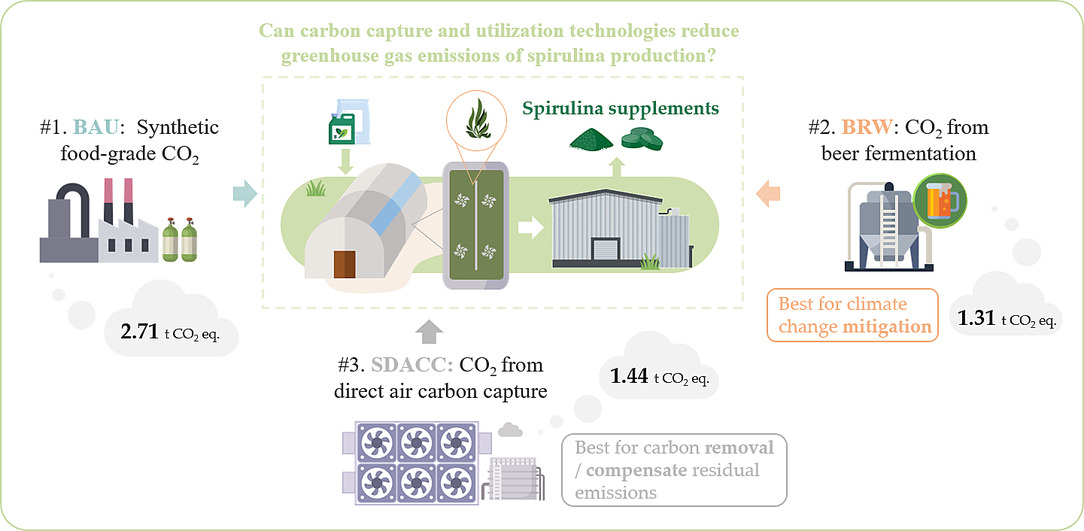Carbon accounting of negative emissions technologies integrated in the life cycle of spirulina supplements
September 10, 2023 | Science of The Total Environment |
Introduction: Research team from University of Cantabria in Spain evaluates carbon capture and utilization (CCU) technologies using Life Cycle Assessment (LCA). The research focuses on the case study of replacing synthetic food-grade CO2 in spirulina production, a nutritionally rich algae product with CO2 captured from beer fermentation (BRW) and CO2 from Direct Air Carbon Capture (DACC).
Key findings: Results reveal that both CCU scenarios outperform the Business as Usual (BAU) scenario, demonstrating a 52% reduction in greenhouse gas emissions for BRW and a 46% reduction for DACC. While the brewery CCU offers a more substantial carbon mitigation, it falls short of achieving net zero emissions due to residual burdens across the supply chain. In contrast, the DACC unit holds promise as it could potentially supply the required CO2 for spirulina production and serve as a CO2 removal solution to offset residual emissions. This opens avenues for further exploration of DACC's technical and economic feasibility in the food sector.
Read more: Carbon accounting of negative emissions technologies integrated in the life cycle of spirulina supplements

Fig. | Carbon capture and utilization technologies in the production of spirulina.
Viewed Articles
September 10, 2023 | Science of The Total Environment |Â Â Introduction: Research team from University of Cantabria in Spain evaluates carbon capture and utilization (CCU) technologies using Life Cycle
Read More
April 27, 2021 | Environmental Science and Pollution Research | Source | Â Introduction: This review, led by scientists from the Department of Environmental Sciences at Central University of Jharkhand
January 15, 2022 | Atmosphere | Source |Â Introduction: Livestock both drives and suffers from climate change, contributing 14.5% of global GHG emissions while facing growing climate-induced stress. Re
April, 2023 | Environmental Challenges | Source |  Introduction: Upstream greenhouse gas (GHG) emissions (i.e. scope 3)—accounting for 70–90% of the dairy industry’s total emissions—pose a persistent
October 20, 2022 | Journal of Cleaner Production | Source | Â Introduction: While organic livestock systems are often hailed as environmentally friendly, their greenhouse gas (GHG) emissions and carbon
January 3, 2024 | Nature Communications | Source |Â Introduction: Conventional intensive farming boosts yields but also drives GHG emissions, soil degradation, and climate vulnerability, especially in






